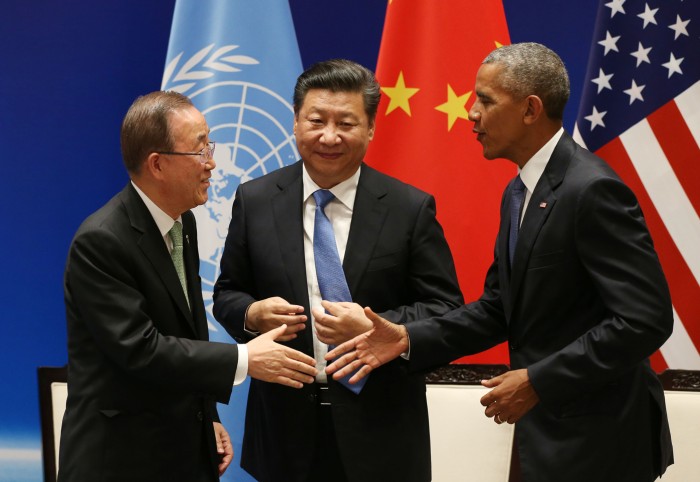The Paris Climate Pact Is Officially Go
For the Paris climate agreement to go into effect, 55 countries representing 55 percent of global emissions had to sign up. That’s finally happened.
While 195 nations endorsed the agreement at the COP 21 climate meeting in Paris last December, those countries then had to approve them domestically and submit their final approval to the United Nations. Earlier this week, the European Parliament voted to ratify the Paris agreement, which in turn allowed the European Union and seven of its member states to sign up to the pact. Canada, Nepal, and India have all also stepped up to the mark.
And with that, the limits are met—73 nations accounting for over 56 percent of the world’s emissions are now signed up to the accord. It’s hoped that the pact will be activated on November 4.

That’s commensurate with the hopes of U.N. Secretary General Ban Ki-moon. Two weeks ago at the U.N.’s General Assembly meeting, he said that he was “ever more confident” that the accord would be ratified this year. His hopes have been realized. Reacting to the the news, President Obama has said that enactment of the pact “gives us the best possible shot to save the one planet we got.” (Killer rhyme, Barack.)
Now comes the hard part. There’s still a long way to go if we’re to ensure that the planet doesn’t warm by more than the 2 °C described in the pact. The agreement is, after all, little more than a piece of paper. Now we need action by local and national governments to save us from ourselves.
(Read more: Science, The Guardian, “The Paris Climate Accord Just Passed a Crucial Threshold,” “Six Months after Paris Accord, We’re Losing the Climate-Change Battle”)
Keep Reading
Most Popular
Large language models can do jaw-dropping things. But nobody knows exactly why.
And that's a problem. Figuring it out is one of the biggest scientific puzzles of our time and a crucial step towards controlling more powerful future models.
The problem with plug-in hybrids? Their drivers.
Plug-in hybrids are often sold as a transition to EVs, but new data from Europe shows we’re still underestimating the emissions they produce.
How scientists traced a mysterious covid case back to six toilets
When wastewater surveillance turns into a hunt for a single infected individual, the ethics get tricky.
Google DeepMind’s new generative model makes Super Mario–like games from scratch
Genie learns how to control games by watching hours and hours of video. It could help train next-gen robots too.
Stay connected
Get the latest updates from
MIT Technology Review
Discover special offers, top stories, upcoming events, and more.